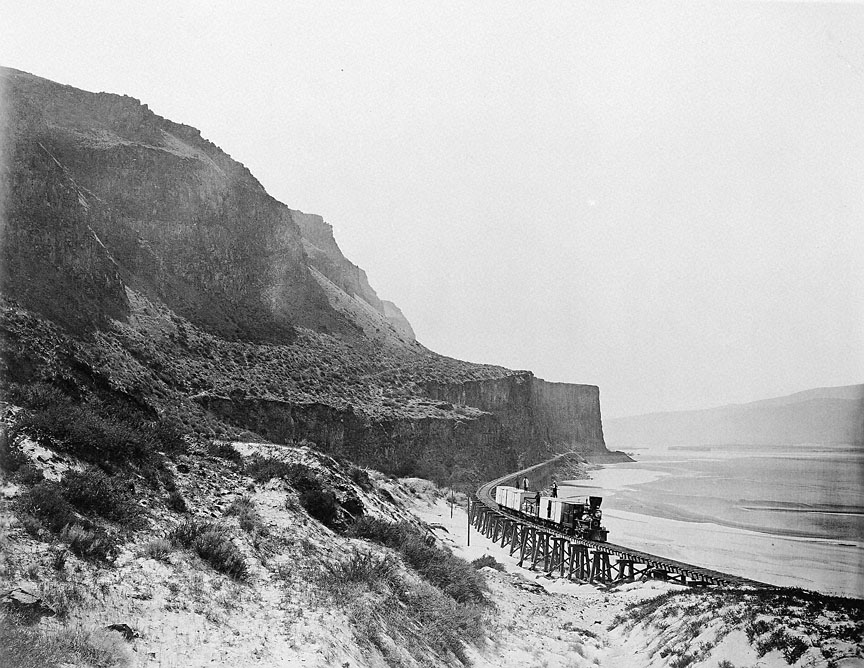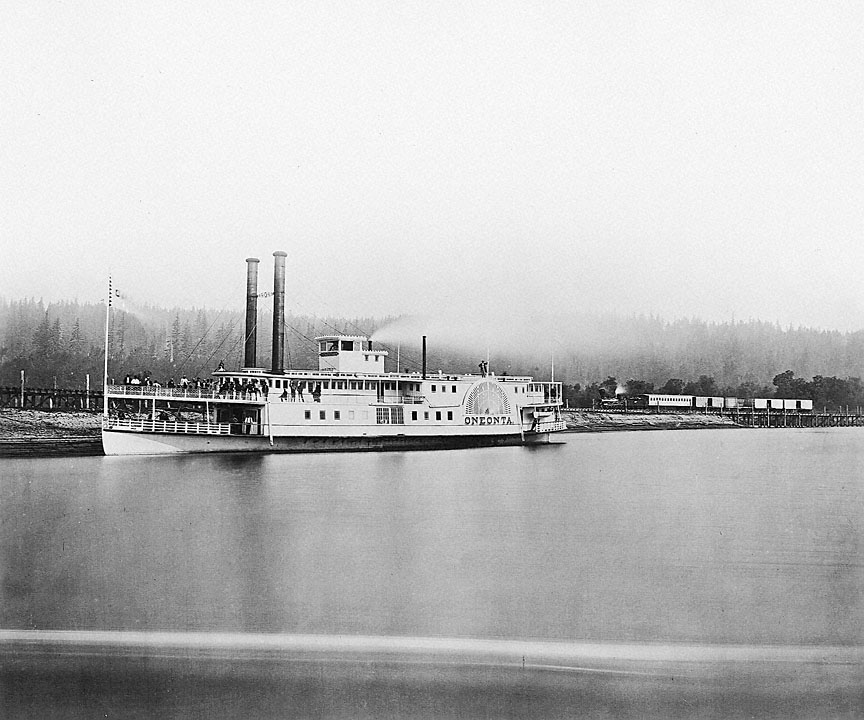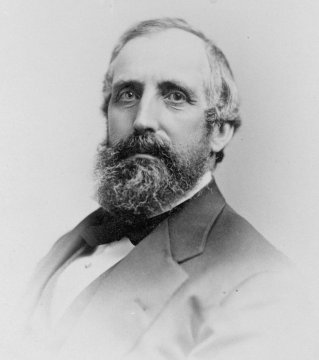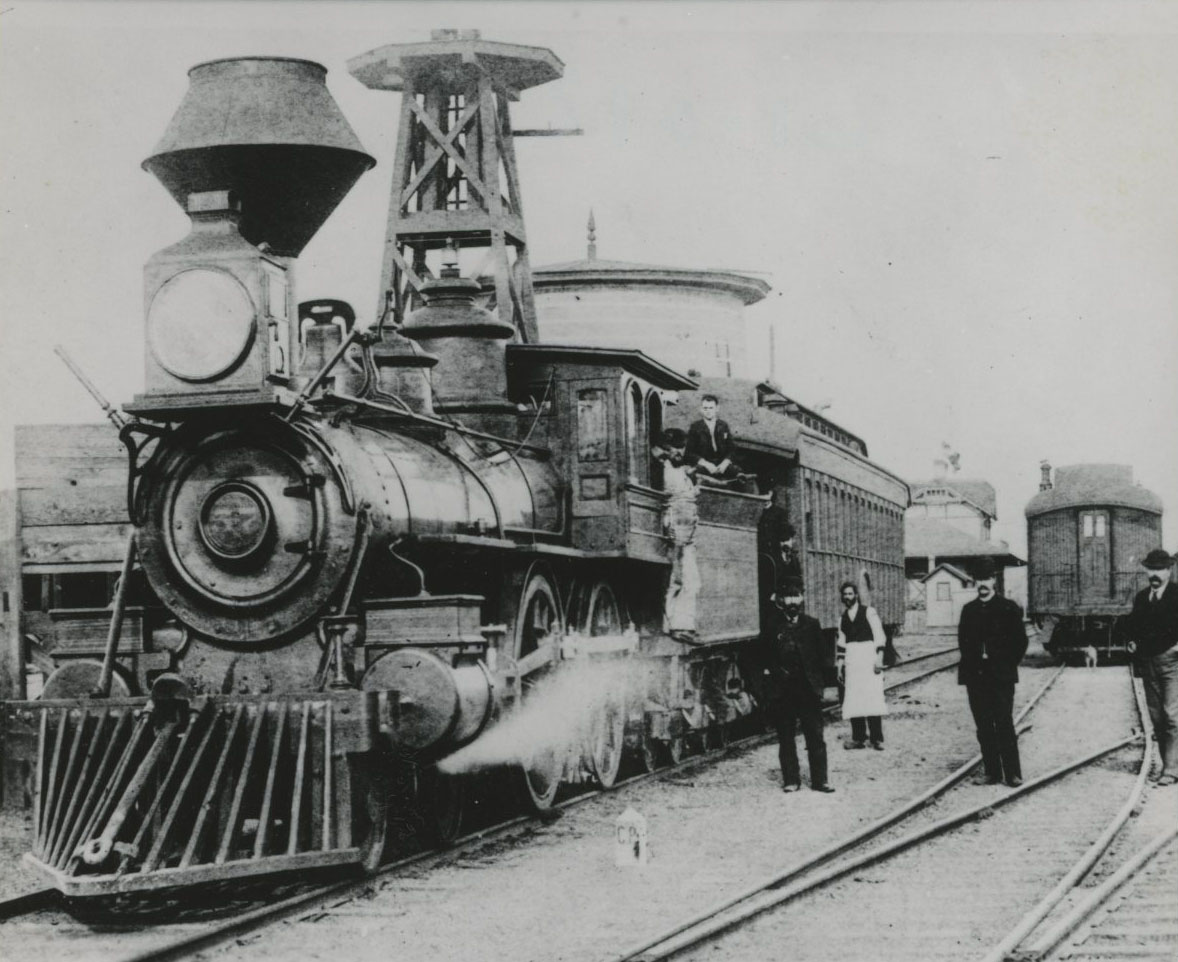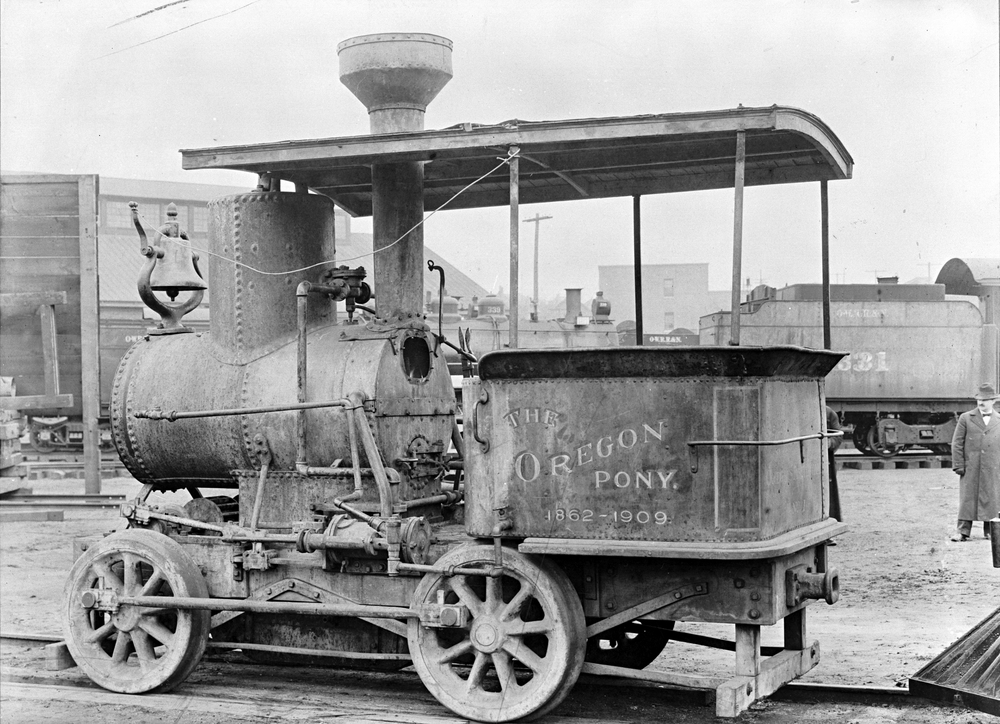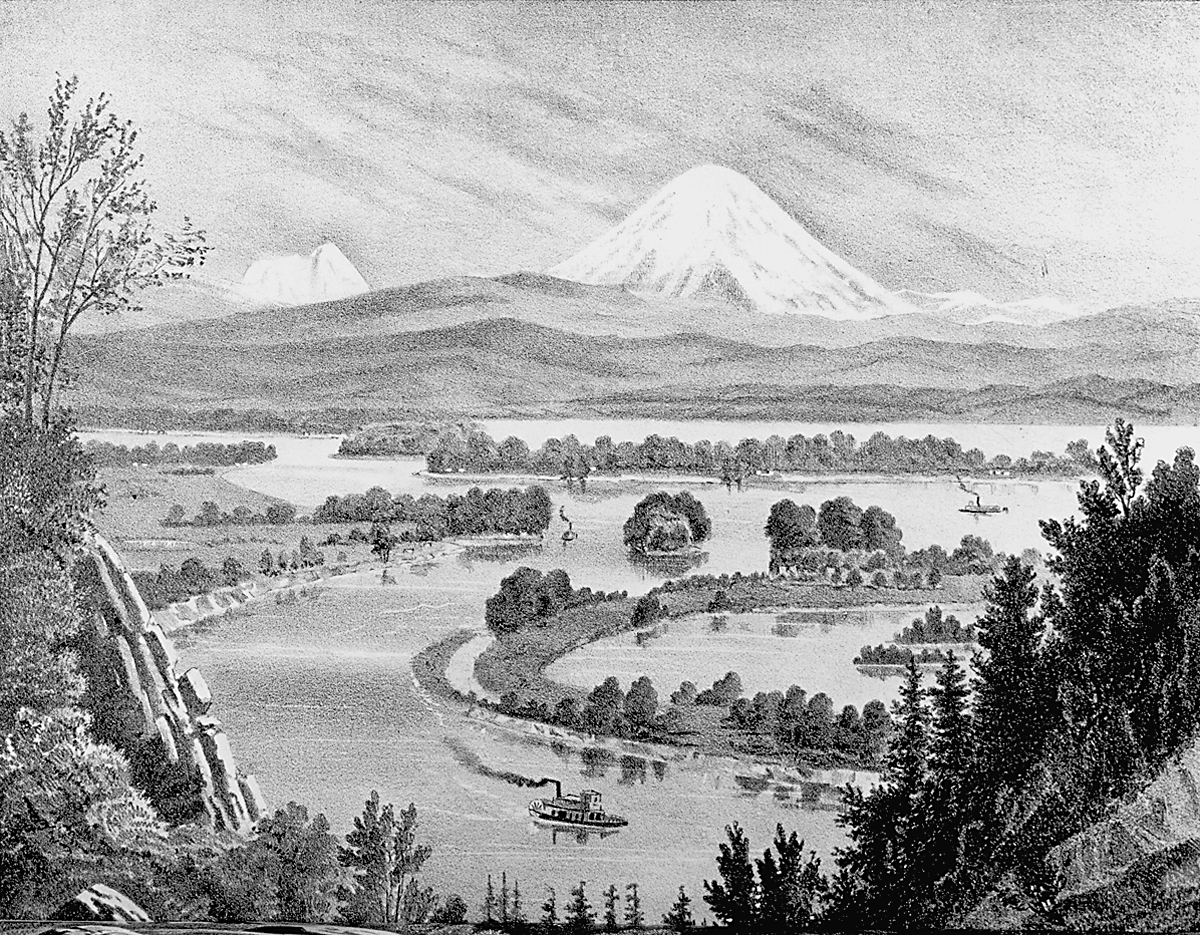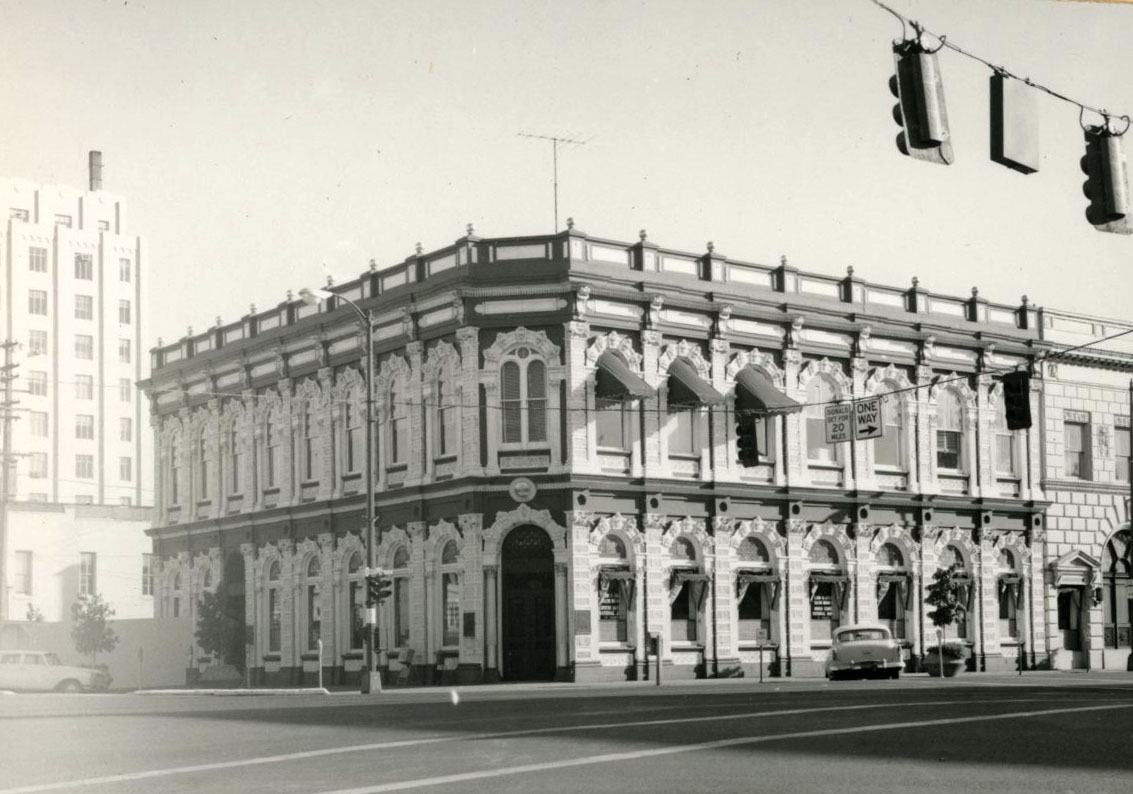Among early business enterprises in Oregon, the Oregon Steam Navigation Company (OSN) stands out as uncommon on two counts. Quite against the dominant trend in the Pacific Northwest, OSN was funded by local investors who were determined to keep Portland’s interests uppermost. In addition, OSN effectively operated for two decades with a near monopoly over steam-powered water transportation on the Columbia River, from the lower river to interior locations as far from Portland as present-day Lewiston and Lake Pend Oreille, Idaho. OSN was extremely unpopular because of its tough-minded business practices and its stranglehold on shipping.
In 1850, steamboat transportation came to the Oregon Country, first in regular connections between Astoria and Portland on the Columbia, a shallow-draft sidewheeler, and then on a sizable boat built at Milwaukie on the Willamette River, the Lot Whitcomb. By the mid 1850s, steamboats operated on the Willamette above the falls to Dayton, on the Yamhill River, and on the Columbia from Astoria to the interior. The traffic on the Columbia was broken up into three segments: the lower river from Astoria to the Cascades; the middle river from the Cascades to The Dalles; and the upper river from above Celilo Falls to landings nearly 250 miles from Portland.
In 1858, the discovery of gold in Washington Territory on the Upper Columbia was the proximate cause of the creation of OSN. Navigation by boat up the river required portages at the Cascades and again at The Dalles-Celilo Falls. Owners of the portages on the Washington and Oregon sides of the Columbia effectively controlled passage. On the river above Celilo Falls, Robert R. Thompson had near control of traffic and had built the steamboat Colonel Wright at The Dalles in 1859.
Steamboat owners on the lower river—John Ainsworth, Benjamin Stark, William S. Ladd, and Jacob Kamm—sought an integration of Columbia River transportation to take advantage of increasing traffic to mining fields in the interior. The capitalists purchased The Dalles-Celilo portage and the Colonel Wright from Thompson and also gained control of the Cascades portages from the owners—William and Putnam Bradford on the Washington side and Harrison Olmstead and Joseph Ruckel on the Oregon side—who retained their property rights in the portages and received royalties as compensation. The new company, OSN, filed corporate papers in Washington Territory in 1860 and in Oregon in 1862. The first corporate board members included Ainsworth, Ladd, Kamm, Ruckel, Bradford, Lawrence Coe representing Thompson’s interests, and Simeon Reed on behalf of Benjamin Stark.
OSN brought the company’s investors nearly a 50 percent return on their money in 1862. Within two years, its boats had carried nearly 100,000 passengers and 60,000 tons of freight upriver from Celilo. The OSN’s elegant Carrie Ladd, a sternwheeler with well-appointed cabins, ran the lower river to the Cascades; the Idaho, a sidewheeler, steamed up to The Dalles; and the Colonel Wright worked the upper river. The company also built new boats and expanded service to Arrow Lake in British Columbia and on Lake Pend Oreille to connect with Montana mining districts.
By 1864, the company had purchased the portages from Bradford and Ruckel and two portage railroads on the north and south banks of the river. The Oregon portage railroad included use of the state’s first steam railroad engine, the Oregon Pony. In the late 1860s, OSN operated eighteen boats on the Columbia and Snake Rivers and had a commanding presence in The Dalles, where it constructed an enormous warehouse, tool shops, a hotel, and a sizable wharf.
Although OSN was successful and ambitious, factions developed among the company’s thirty-three stockholders. In 1866, divisions widened over OSN’s decision to build the Oregonian, a 270-foot steamer, to compete against Ben Holladay’s Pacific Mail Steamship Company for ocean-going ship traffic between San Francisco and Portland. Daniel Bradford led discontented owners in criticizing OSN’s expansion and chastising company managers for a decrease in earnings in 1866 and 1867.
By the end of 1867, disgruntled stockholders had sold out, leaving OSN with just seven owners. Company directors Ainsworth, Reed, Ladd, and Thompson ran the company and quickly bought up remaining shares, before increasing capitalization in 1868 by selling new shares to railroad financier Jay Cooke and the Northern Pacific Railroad. OSN’s fate became entwined with the Northern Pacific’s financial woes during the 1870s. By 1879, Henry Villard, the representative of German bondholders with a huge stake in the Northern Pacific, had arranged purchase of OSN from Ainsworth. The company disappeared into the apparatus and finances of a transcontinental railroad.
The Oregon Steam Navigation Company was a colossus during its brief existence. Its ambitious directors constructed an effective transportation network that included four railroads—the Walla Walla and Columbia River Railroad, the Dalles Portage Railroad, and two railroads at the Cascades portage. When the Northern Pacific absorbed the company, OSN handed over twenty-six steamboats; hundreds of acres of real estate in Portland, Astoria, The Dalles, Umatilla, and Vancouver; and more than $3 million in equipage.
-
![The Dalles portage railroad, 1860-1870]()
The Dalles portage railroad, 1860-1870.
The Dalles portage railroad, 1860-1870 Courtesy Oregon State Library
-
![Lot Whitcomb, Oregon City, 1850s]()
Lot Whitcomb, Oregon City, 1850s.
Lot Whitcomb, Oregon City, 1850s Courtesy Salem Public Library
-
![Benjamin Stark]()
Benjamin Stark, c.1885.
Benjamin Stark Courtesy Oregon Hist. Soc. Research Lib., Journal, 014112
-
![Portage Railroad, Cape Horn, 1867]()
Portage Railroad, Cape Horn, 1867.
Portage Railroad, Cape Horn, 1867 Courtesy Oreg. Hist. Soc. Research Lib., Orhi2158
-
![The steamer Oneonta, Columbia River, 1867]()
The steamer Oneonta, Columbia River, 1867.
The steamer Oneonta, Columbia River, 1867 Courtesy Oreg. Hist. Soc. Research Lib., OrHi1458
-
![William S. Ladd]()
William S. Ladd.
William S. Ladd Courtesy Oregon State Library
Related Entries
-
![Benjamin Stark (1820-1898)]()
Benjamin Stark (1820-1898)
Benjamin Stark was a merchant, land speculator, and politician active i…
-
![Columbia River]()
Columbia River
The River For more than ten millennia, the Columbia River has been the…
-
![Henry Villard (1835-1900)]()
Henry Villard (1835-1900)
Henry Villard gained national significance as a journalist, advocate of…
-
![Oregon Pony]()
Oregon Pony
The first steam locomotive in the Pacific Northwest—the "Oregon Pony"—w…
-
Willamette River
The Willamette River and its extensive drainage basin lie in the greate…
-
![William S. Ladd (1826-1893)]()
William S. Ladd (1826-1893)
At age twenty-seven, William Sargent Ladd was the youngest mayor to eve…
Related Historical Records
Map This on the Oregon History WayFinder
The Oregon History Wayfinder is an interactive map that identifies significant places, people, and events in Oregon history.
Further Reading
Johansen, Dorothy O. “The Oregon Steam Navigation Company: An Example of Capitalism on the Frontier.” Pacific Historical Review (June 1941): 179-188.
Johansen, Dorothy O., and Charles M. Gates. Empire of the Columbia. New York: Harper, 1957.
Mills, Randall V. Stern-Wheelers up Columbia. Lincoln: Univ. of Nebraska Press, 1947.
White, Richard. Railroaded. New York.: Norton, 2011.




